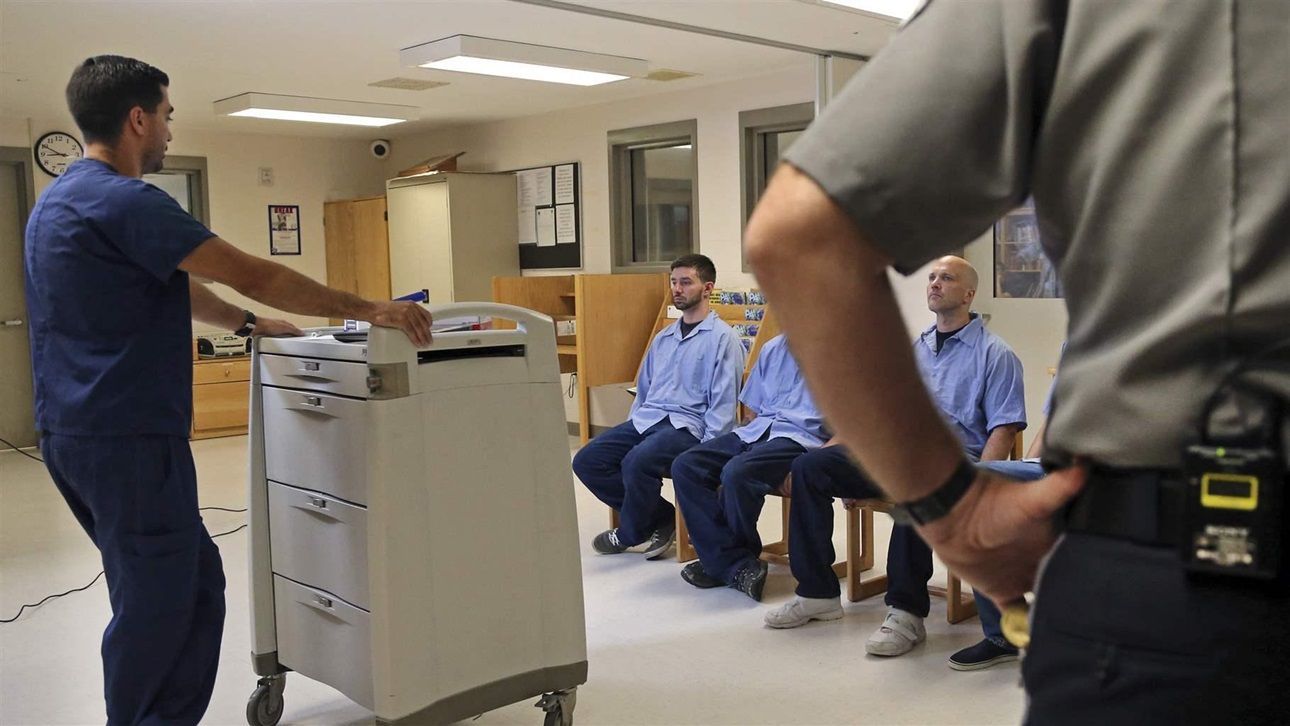Report - Prisons Punish Drug Use Rather Than Provide Treatment
Substance abuse disorder rates in jails & prisons far outpaces general public

Like everything in the substance use/abuse treatment realm, there are challenges to successful treatment and recovery, and those obstacles are even more prevalent when treating incarcerated people. The National Institute on Drug Abuse (NIH) states; “To be effective for this population, treatment must begin in prison and be sustained after release through participation in community treatment programs.” Care on an ongoing basis helps former prisoners avoid relapsing and committing crimes, two outcomes that are big pluses and potential lifesavers.
However, how many people incarcerated in America's prisons and jails receive professional help in addressing their substance use problems? “A small percentage” is the phrase NIH uses, as in “only a small percentage of those who need treatment while behind bars actually receive it, and adds, "Often the treatment provided is inadequate.”
A recent report from Prison Policy Initiative confirms this assertion. The prevalence of substance use disorders at every level of the criminal legal system points to an unavoidable fact: despite the deep unpopularity of the War on Drugs, our society still responds to substance use, and related crimes, as individual failures requiring punishment, rather than as a public health problem. Unsurprisingly, this approach isn't working.
Key findings from the report:
- Nationally, approximately 8% of people met the criteria for substance use disorders in 2019, but such disorders are far more common among people who are arrested (41%) and people incarcerated in federal (32%) or state prisons (49%). This means that approximately three million people with substance use disorders are locked up in any given year: at least two million people with substance use disorders are arrested annually and about half a million people in state and federal prisons meet the criteria for such disorders at the time of their admission.
- In 2019, only 64% of all people admitted to jail each month were screened for opioid use disorder, but of those people, about 15% met the criteria for opioid use disorder. Because we cannot see the full picture through screenings alone, it’s useful to look at mortality data as well. More than 15% of jail deaths in 2019 were attributed to drug or alcohol intoxication (overdose), a significant increase from 4% in 2000 and 7% in 2009.
- More than 578,000 people (47%) in state and federal prisons in 2022 had a substance use disorder in the year prior to their admission.
- Almost 7% of all deaths in state prisons in 2019 were due to drug or alcohol intoxication, compared to less than 2% in 2009, yet only 4% of all adult deaths in the U.S. were attributed to drugs or alcohol.
- Of the nearly 3,000 local jails across the country, less than two-thirds (63%) screen people for opioid use disorder when they are admitted. Only half (54%) provide medications for people experiencing withdrawal. An even smaller percentage of jails — 41% — provide behavioral or psychological treatment, and 29% provide education about overdose.
- Most state and federal prisons (81%) offered some “drug or alcohol dependency, counseling, or awareness programs” in 2019, but among people in state prisons with a substance use disorder, only 10% had received clinical treatment in the form of a residential treatment program, professional counseling, detoxification unit, or MAT (Medically-assisted treatment).
Even when correctional facilities do offer necessary treatments, their one-size-fits-all approaches can be limiting, overlooking the specific needs of different populations. For example, women in prison are often expected to participate in treatment programs originally designed for men.
You can read the full report, "Addicted to punishment: Jails and prisons punish drug use far more than they treat it," including recommendations, at the Prison Policy Initiative website. Prison Policy Initiative is a non-profit, non-partisan organization that produces cutting edge research to expose the broader harm of mass criminalization, and then sparks advocacy campaigns to create a more just society.










